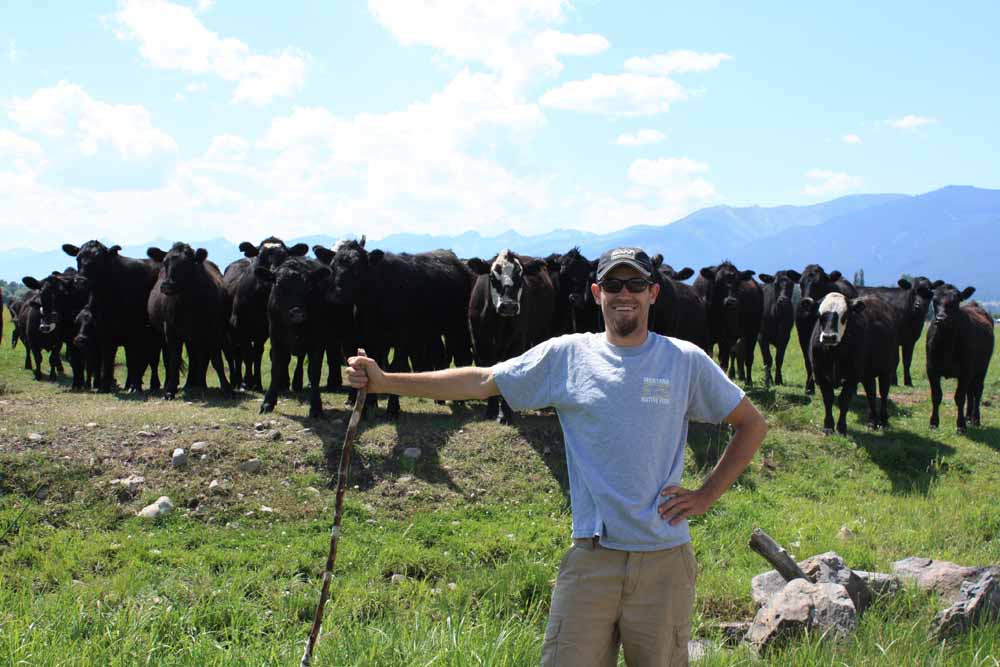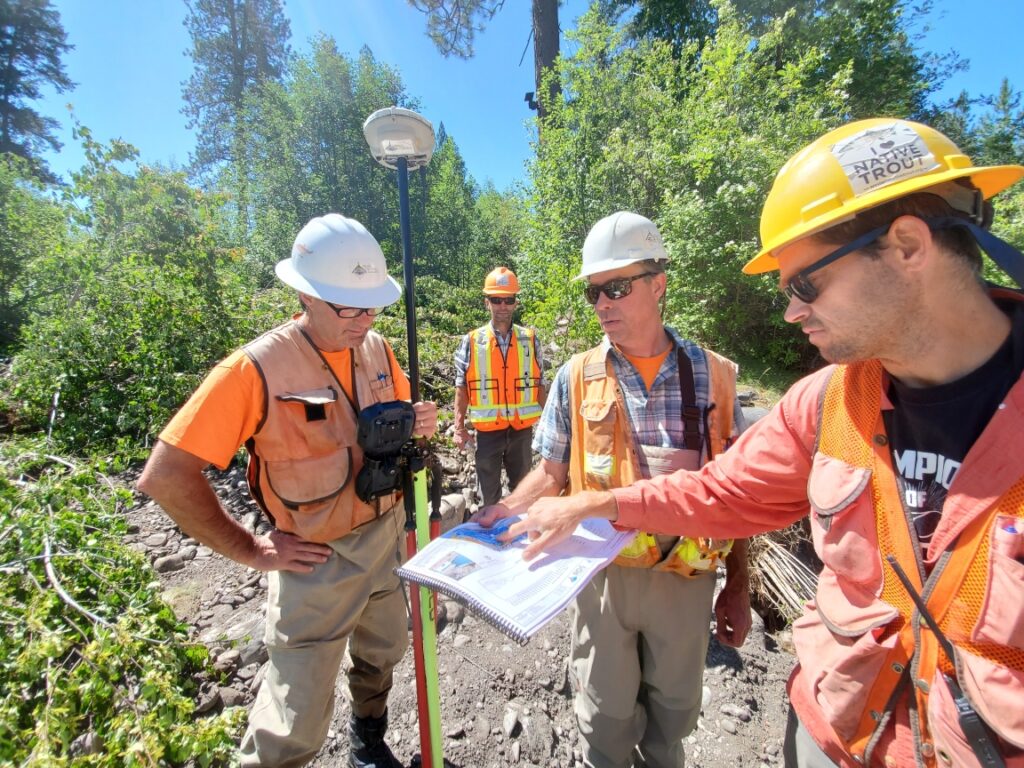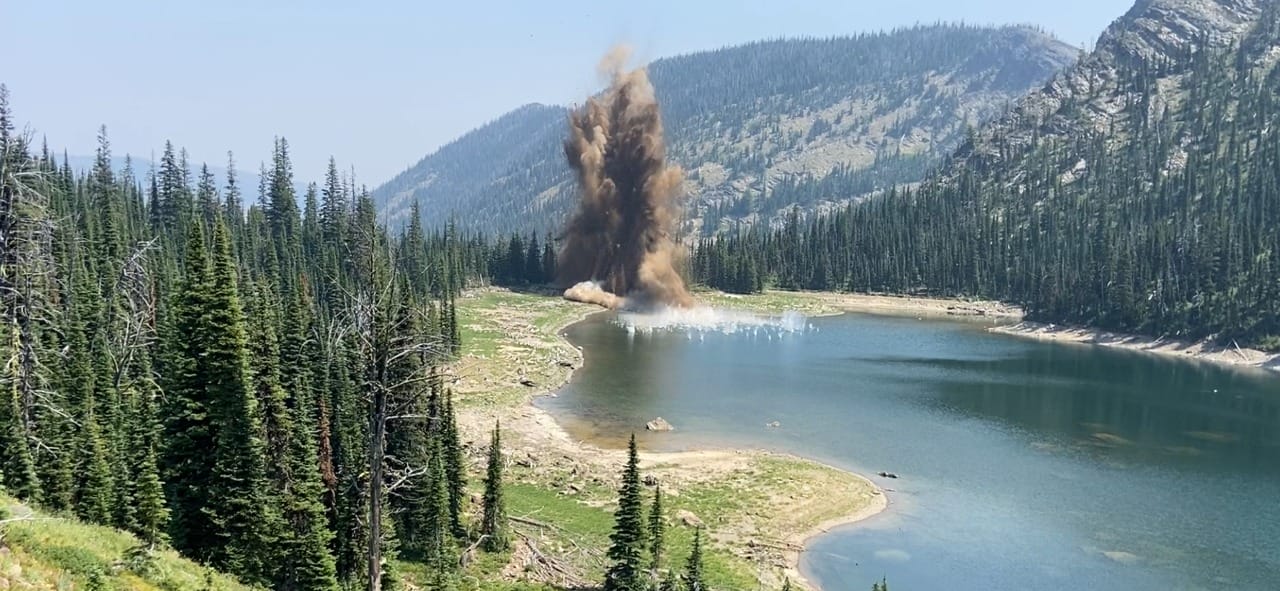TU works with some extremely talented people while developing and completing projects in the field that help make fishing better. We are excited to bring you a series highlighting these contractors and other professionals that make them happen. We hire equipment operators, truck drivers, laborers, material suppliers, engineers, technicians and water testing labs. They are unique, talented, humble and some are downright wild, but TU’s contractors are a driving force behind successful projects.
Many of these projects help maintain the livelihood for some of the smaller outfits that are common in rural towns where many of our projects take place.
Today, we are highlighting Rob Roberts, senior project manager at TU, who last year had an explosive summer with the U.S. Forest Service and the City of Missoula to restore the waters of the Rattlesnake Wilderness.
Rob has been described by colleagues as “interminably loquacious,” a neat skill that allowed him to convince TU CEO Chris Wood that he should move from D.C. to Montana to start up our abandoned mines reclamation program in the state.
Twenty years later, the TU restoration staff has expanded to include ten full-time project managers dedicated to the conservation of Montana’s coldwater fisheries.
“Rob epitomizes the TU ethos of doing whatever it takes to get the job done” said Casey Hackathorn, Montana state director at TU. “From building partnerships to operating heavy equipment he’s literally done it all.”

Among the most unique experiences Rob has had include removing the McKinley Lake Dam in the Rattlesnake Wilderness outside of Missoula. Between 1911 and 1923, 10 dams were built on eight high mountain lakes in Montana’s Rattlesnake Creek headwaters to augment water supply for the growing city. These dams are located deep in the Rattlesnake Wilderness Area, which folds into the Lolo National Forest. In 2017, the City of Missoula assumed ownership of Rattlesnake Creek Dam, the 10 wilderness storage dams and all associated water rights.
“The City of Missoula’s long-term goal in acquiring its drinking water system and the Rattlesnake dams is to ensure that its citizens will have a safe, affordable and sustainable water supply,” said Logan McInnis at the City of Missoula. “Rob Roberts and Trout Unlimited have been incredible partners in the removal of two dams and hopefully more in the future.”
The lower Rattlesnake Creek Dam on Rattlesnake Creek was removed by TU, City of Missoula and partners in 2020. The McKinley Lake Dam Removal in the wilderness area was prioritized for two reasons. One, to mitigate the risk of dam failure and subsequent downstream impacts. Two, to restore natural conditions at the site.
“In order to accomplish both of these goals though, we needed some expert help,” said Roberts. “Thankfully, the U.S. Forest Service was able to step in and help us to safely remove the dam with their Master Blaster and explosives team.”

To accomplish the project without the use of mechanized equipment, the Ninemile Ranger District Northern Region pack train hauled over 1000 pounds of explosives and other project materials to the site. Lolo National Forest Wilderness staff from the Missoula Ranger District were on-site, monitoring activities and supporting the use of minimum impact techniques in the Rattlesnake Wilderness. The remaining portions of the earthen dam were removed using hand labor and tools.
“Thankfully, explosives are considered a primitive tool,” said Roberts. “And seeing the explosives brought in by pack train and a dam turned into dust was definitely a once-in-a-lifetime experience.”
The initial dam removal is part of a pilot effort to assess needs for upgrades or removal of aging dam infrastructure at the 10 lakes in the Rattlesnake Wilderness.
“In the long run, none of this would be possible without our partners like the U.S. Forest Service, City of Missoula, Montana Fish, Wildlife, and Parks, Resources Legacy Fund and the Montana Conservation Corps––among many others”, said Roberts. “It takes a multitude of partners for any restoration project to restore the water for communities downstream.”



